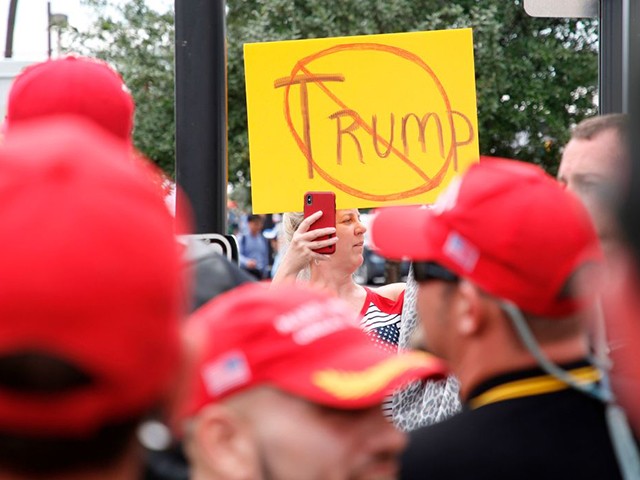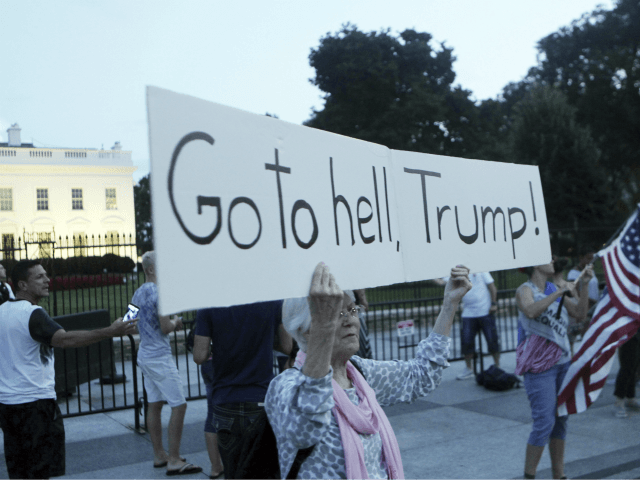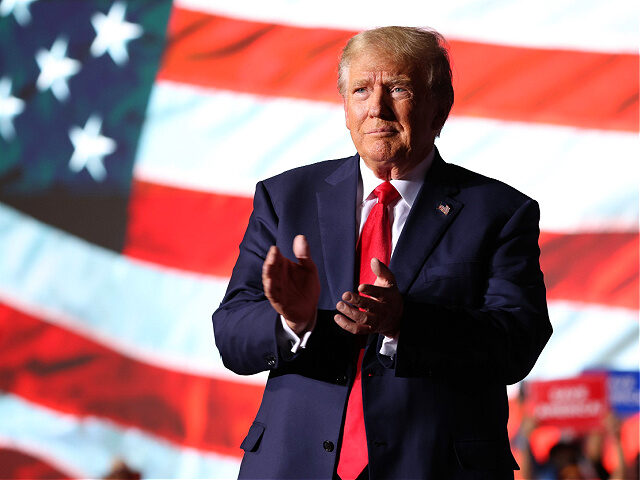American society will collapse into argument and violence if Donald Trump is reelected president, says a Washington Post article.
The Post‘s article gives its liberal readers slasher-movie thrills (“Trump Nightmare on 16th Street”), cultural flattery, and a lot of apocalypse theory for QAnon-style chatter during the fall and winter:
“I think it would be the end of the republic,” says Princeton University professor Sean Wilentz, one of the historians President Biden consulted in August about America’s teetering democracy. “It would be a kind of overthrow from within. … It would be a coup of the way we’ve always understood America.”
But the BlueQAnon article’s “nightmarish scenarios of democratic dominoes” also rationalizes election-denial violence by comfortable-class liberals against a duly-elected and populist Trump II administration:
Activated rage would not be limited to Trump supporters. A narrow or dubious Trump victory would inspire massive, potentially violent protests on the left. “Then the MAGA, violent, January 6th-style extremists would take that as the signal to rise up,” [Larry] Diamond says.
“This is not going to be something that’s just done by one side; that’s why the risk of political violence is so severe,” [David] Becker says.
… Another assumption that the right makes which is erroneous is that they’re the only ones who have guns [said Timothy Snyder] … They may be carrying more weapons than the other side, but there are so many weapons in the United States, and there are plenty of people who are not on the right who have weapons, and there could be many more very quickly.”
“This time Trump’s got a hack Defense Department and moves to repress,” says [Steven] Levitsky, the Harvard professor. “We know that repression of protest very often triggers the escalation of protests; it could get very ugly, very quickly, under Trump.”

File/An anti-Trump demonstrator holds up a placard and films a group of supporters of U.S. President Donald Trump, wearing “Make America Great Again” hats, near the Amway Center on June 18, 2019, Orlando, Florida. (GREGG NEWTON/AFP via Getty Images)
The article does not mention the nationwide wave of progressive-backed, pre-election “Black Lives Matter” street violence. That violence helped raise the crime record amid a spike in black-on-black murders.
The Washington Post author, David Montgomery, recognizes — but chooses to ignore — the political discontent and elite economic policies that got Trump elected in 2016:
By subscribing, you agree to our terms of use & privacy policy. You will receive email marketing messages from Breitbart News Network to the email you provide. You may unsubscribe at any time.
Trump did not cause the fissures slowly pulling the country apart. He’s a symptom — but he’s also an accelerant, one whose return to the White House could provoke the final breakdown.
That choice allows the Washington Post to declare the public’s priorities to be abhorrent and so deserving of a violent rejection by elites and the comfortable classes who gain from those policies. The article describes the unforgivable Trump II priorities as:
Execute drug dealers. Move homeless people to tent cities. Eliminate the Education Department. Restrict voting to one day using paper ballots … reinstitute an effective ban on transgender people serving, and dismantle ongoing diversity and inclusion efforts that his Senate allies already lampoon as “woke” … “withdraw all U.S. forces from Germany. … And depending on his views of Putin and the conflict in Ukraine, he might just stop the flow of arms, ammunition and material to Kyiv.” … harsh measures to counter illegal immigration. “America will not be known as the place of the Statue of Liberty but rather as the place where there’s a big wall at the border,” says Vanessa Cárdenas …
The article hides economic issues, such as federal spending priorities, the inflow of wage-cutting legal and illegal migrants, and trade rules. But that concealment preserves the article’s thrilling apocalyptic vibe by allowing the Post‘s readers to ignore their role in creating Trump, who emerged from the federal government’s post-1990 wealth-shifting economic policies.
That hidden comfortable-class economic agenda emerges elsewhere as the article suggests any Trump-style populist leader deserves to be fought in the street: “Those [violent] dynamics could intensify with Trump or a similar figure in the White House, [Barbara Walter] says.”

File/Anti-Trump Supporters and Tourists attends the Protests against Anti-Unite the Right Rally the day before the main rally held in Lafayette Park in the United States Capital of Washington, D.C . (mpi43/MediaPunch /IPX)
The article’s comfortable-class flattery even extends to the federal national security and intelligence agencies that have quietly steered the nation since 2000 into a high-risk proxy war with nuclear-armed Russia:
Up the Potomac River from the Pentagon, at CIA headquarters in Langley, Va., a Trump loyalist ensconced in the director’s chair could damage intelligence efforts at the most basic levels, retired Gen. Michael Hayden, who served as CIA director under President George W. Bush, told me over lunch at a diner. “Seasoned people will leave,” he said.
The loss of “seasoned people” from the CIA will not threaten the Republic, but the article insists on perpetual Ivy League vigilance against the Ogre from Mar-a-Lago:
Could it happen here? Would it be that bad? The message of prophets of democratic doom can sound over-the-top — “crackpot, practically,” acknowledges Wilentz, the Princeton historian. But to dismiss it, they say, would be naive — and they urge vigilance and civic engagement to prevent the nightmare from coming true.
The article includes a few brief defenses of Trump and populism — but mostly from the corporate-backed establishment advocates who burrowed their way into Trump’s first administration.
“We have to put in place is a system where those who agree with the agenda of more freedom and less government have people working in those positions that also align and agree with that,” said Brooke Rollins, a White House official under Trump who now heads the establishment-funded America First Policy Institute. “It’s okay if you don’t, but maybe you should not necessarily be part of a policymaking process.”
Rollins and her allies — including especially among GOP leaders in Congress — blocked much of Trump’s popular populist agenda in his first term. That elite-backed bloc reduced working-class support for Trump in 2020, so helping to elect progressive Joe Biden to the White House.
The same bloc is now working to ensure they play a central role in any Trump II administration — and to disable the election of a more organized populism in 2028.

COMMENTS
Please let us know if you're having issues with commenting.